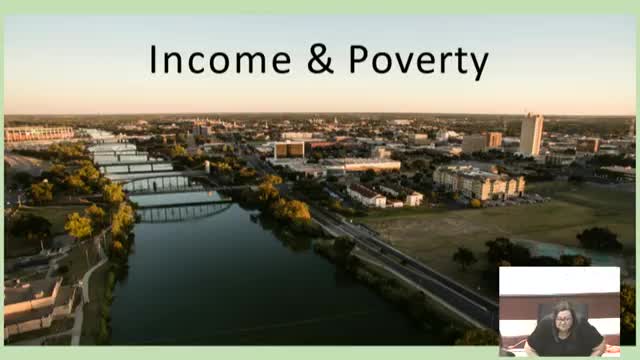Waco faces rising income disparities and high poverty rates despite Baylor's influence
December 17, 2024 | Waco, McLennan County, Texas
This article was created by AI summarizing key points discussed. AI makes mistakes, so for full details and context, please refer to the video of the full meeting. Please report any errors so we can fix them. Report an error »

Waco officials are grappling with significant income disparities and high poverty rates, as revealed in a recent government work session. The meeting highlighted that Waco's median income stands at $47,421, trailing behind peer cities and the state average. While there has been a slight improvement in incomes, the gap between Waco and its peer cities remains substantial.
The poverty rate in Waco is alarming, with 24.8% of residents living below the poverty line, compared to 17.4% in peer cities and 14% statewide. Notably, the presence of Baylor University inflates these figures, as many students are classified as zero-income households. When college students are excluded from the analysis, Waco's poverty rate drops to 20%, yet the gap with peer cities persists.
Disparities are also evident when examining poverty rates by race. The Hispanic population has seen a decline in poverty rates, while the situation for Black residents is concerning, with rates increasing. In 2022, 57% of Black children in Waco lived in households below the poverty line, underscoring the urgent need for targeted interventions.
Housing affordability is another pressing issue, with the median home price now 5.2 times the median income, making it less affordable than in peer cities. Although rent prices have risen, they remain lower than in comparable areas.
The meeting also addressed mental health and food insecurity, with rising rates of mental distress reported in Waco, particularly among college students. Approximately 17% of residents face food insecurity, highlighting the ongoing challenges in accessing healthy food options.
As Waco continues to confront these socioeconomic challenges, city officials are urged to develop comprehensive strategies to bridge income gaps, improve housing affordability, and enhance support for vulnerable populations. The discussions from this work session signal a critical moment for Waco to address these disparities and foster a more equitable community.
The poverty rate in Waco is alarming, with 24.8% of residents living below the poverty line, compared to 17.4% in peer cities and 14% statewide. Notably, the presence of Baylor University inflates these figures, as many students are classified as zero-income households. When college students are excluded from the analysis, Waco's poverty rate drops to 20%, yet the gap with peer cities persists.
Disparities are also evident when examining poverty rates by race. The Hispanic population has seen a decline in poverty rates, while the situation for Black residents is concerning, with rates increasing. In 2022, 57% of Black children in Waco lived in households below the poverty line, underscoring the urgent need for targeted interventions.
Housing affordability is another pressing issue, with the median home price now 5.2 times the median income, making it less affordable than in peer cities. Although rent prices have risen, they remain lower than in comparable areas.
The meeting also addressed mental health and food insecurity, with rising rates of mental distress reported in Waco, particularly among college students. Approximately 17% of residents face food insecurity, highlighting the ongoing challenges in accessing healthy food options.
As Waco continues to confront these socioeconomic challenges, city officials are urged to develop comprehensive strategies to bridge income gaps, improve housing affordability, and enhance support for vulnerable populations. The discussions from this work session signal a critical moment for Waco to address these disparities and foster a more equitable community.
View the Full Meeting & All Its Details
This article offers just a summary. Unlock complete video, transcripts, and insights as a Founder Member.
✓
Watch full, unedited meeting videos
✓
Search every word spoken in unlimited transcripts
✓
AI summaries & real-time alerts (all government levels)
✓
Permanent access to expanding government content
30-day money-back guarantee

